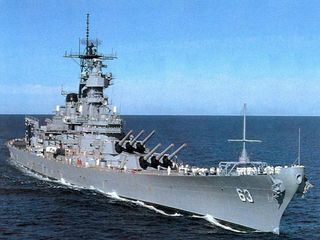
 |
|
|||||||
| Home | Forums | Gallery | Register | Video Directory | FAQ | Members List | Calendar | Games | Today's Posts | Search | Chat Room |
  |
|
|
Thread Tools | Display Modes |
|
#1
|
||||
|
||||
|
Team Seeks to Solve Guadalcanal Mystery
July 07, 2008 Virginian-Pilot Sgt. Frank Few, swimming away from the ambush, looked back in horror. He saw Japanese swords flashing in the dawn sun over the bodies of his Marine buddies lying on a Guadalcanal beach. The attack on Aug. 12, 1942, was the end of the ill-fated Goettge Patrol and the beginning of a largely forgotten mystery of World War II. Three men, including Few, escaped, but rescue parties in the next days found little trace of the rest of the patrol, and no bodies. Sixty-six years later, the 22 men who were lost remain listed as missing in action. This month, a team of three Radford University researchers and six students, including Trevor Twyford and Sarah Clark of Virginia Beach, will try to find out what happened to them. The group is headed for the Solomon Islands in the South Pacific armed with ground-penetrating radar . They hope to locate graves within a 6-acre plot on Guadalcanal, find remains or identify artifacts, and return home at month's end with some overdue closure. "It's not a good subject matter, what we are looking for," said Clark, a senior majoring in psychology and minoring in anthropology. "But if we could actually find them, that would be an amazing thing for the families." The landing on Guadalcanal in August 1942 marked the end of Japanese advances in the Pacific. It was the first major amphibious assault and offensive by U.S. forces in the war . Things were rough from the start, from supply problems to learning to fight in the tropics to realizing how fiercely the Japanese would oppose them. The Goettge Patrol was one of the harder lessons. Marine historians lay it out: The first week , as Marines struggled for control of the airfield that made Guadalcanal a strategic prize, a Japanese prisoner said others were willing to surrender, many of them hurt and starving. Lt. Col. Frank Goettge, a Marine football star and the division's top intelligence officer, asked to lead a patrol to find them. He packed a 25-man outfit with more intelligence officers, the division's head surgeon and a top interpreter, along with the prisoner. Goettge's humanitarian concerns depleted the fighting strength of the patrol and delayed its departure so that the small transport boat ferrying them up the coast landed in pitch dark the night of Aug. 12. It also landed them in a spot they had been warned to avoid because of a concentration of Japanese forces. Soon after the boat left , the Japanese opened up with machine gun and rifle fire, decimating the patrol. The first shots killed Goettge, according to the accounts. The fighting on Guadalcanal continued for six months. More than 1,500 Americans and 15,000 Japanese were killed in action. More battles on more islands followed until the war ended in 1945. The Goettge Patrol became a historical footnote. But not to everyone. Historians believe that the Japanese buried the Americans in trenches, along with some of their own dead, according to Radford University. Attempts over the past 20 years failed to locate the patrol's remains . More recently, a private organization said its research indicated a likely site. Greatest Generation MIA Recoveries, which researches those missing in World War II, asked Radford's Forensic Science Institute for help. Anthropologists Cliff Boyd, co-founder and co-director of the institute; his wife, Donna Boyd, another co-director; and physicist Rhett Herman, also on Radford's faculty, will use archeological techniques to search for the graves. If members of the patrol are found, the Army Joint POW-MIA Accounting Command Central Identification Laboratory in Hawaii will take over the removal. The Radford search team will have to contend not just with the passage of 66 years, but also with roads and buildings since built in the area. Twyford, one student from Virginia Beach, said he used some of the same equipment earlier this year to study ice caps in Alaska. Twyford and Clark, the other Virginia Beach student, said they knew little about Guadalcanal and the historic battle before getting involved in the Radford project. "If we do find something, I almost see it as part of the job," she said. " But I know it will be emotional if we do find them." © Copyright 2008 Virginian-Pilot. http://www.military.com/news/article...=1186032325324 _________________________ |
| Sponsored Links |
|
#2
|
||||
|
||||
|
would not surpise me if they find lots of remains there..............
__________________

|
 |
|
|
 Similar Threads
Similar Threads
|
||||
| Thread | Thread Starter | Forum | Replies | Last Post |
| Solve my heat problem,... | SEATJERKER | General Posts | 17 | 01-06-2008 08:24 PM |
| Los Alamos Seeks New Manager | David | Nuclear/Biological/Chemical | 0 | 05-19-2005 02:38 PM |
| U.S. soldier seeks asylum in Canada | SparrowHawk62 | General Posts | 7 | 02-25-2004 07:30 AM |
| Department Seeks Former POWs | HARDCORE | POW/MIA | 0 | 09-24-2003 09:48 AM |
| Helping solve the TFL ID-card puzzle | thedrifter | Veterans Benefits | 0 | 11-19-2002 04:18 AM |


|